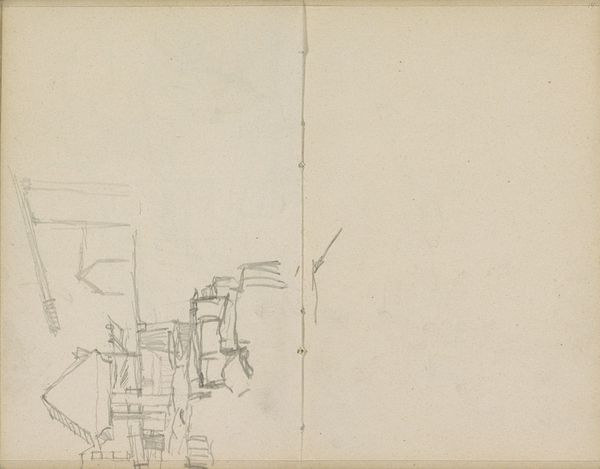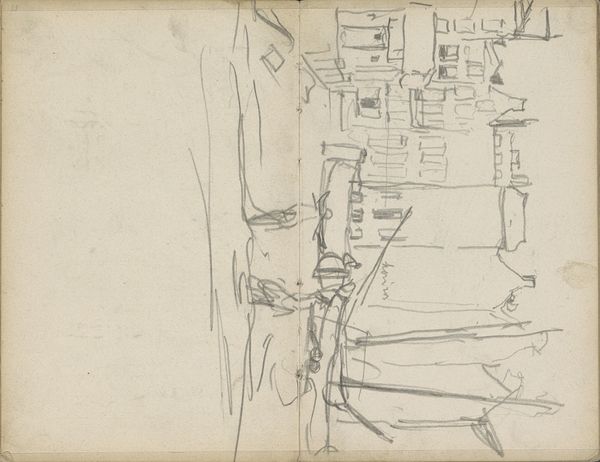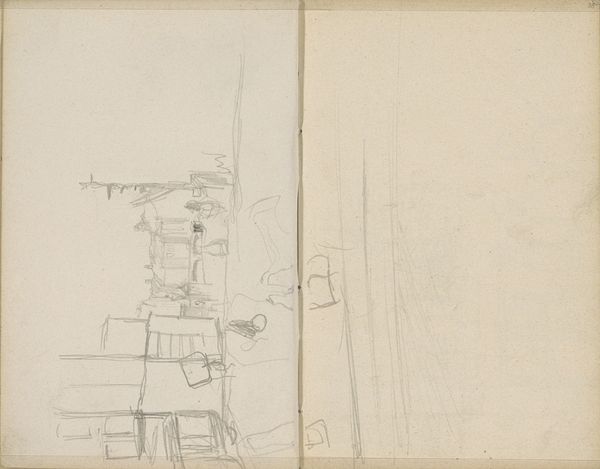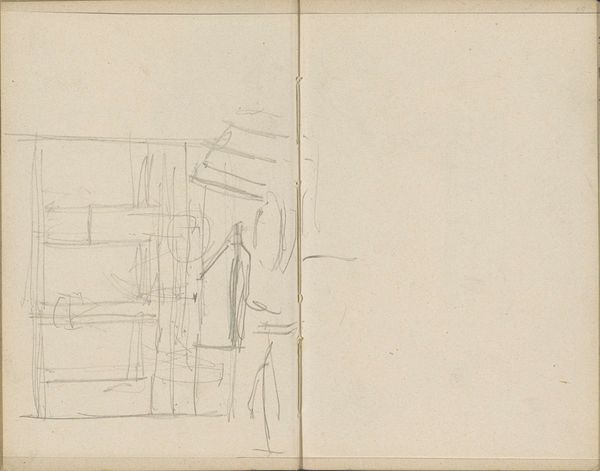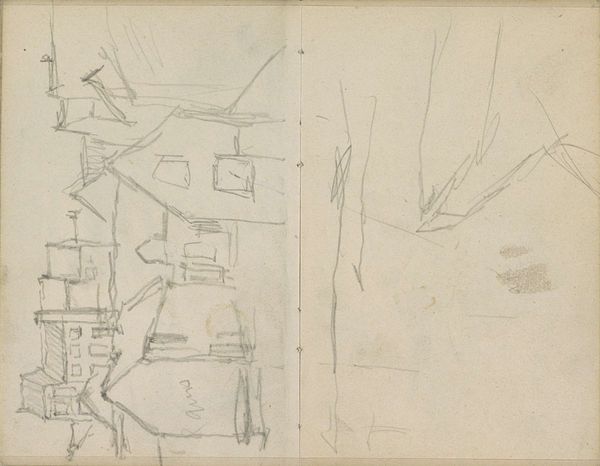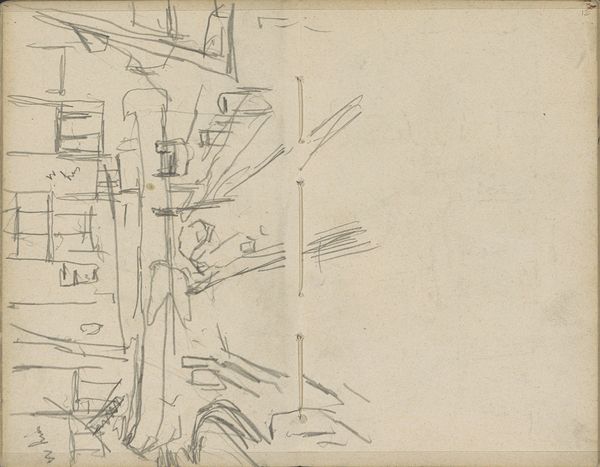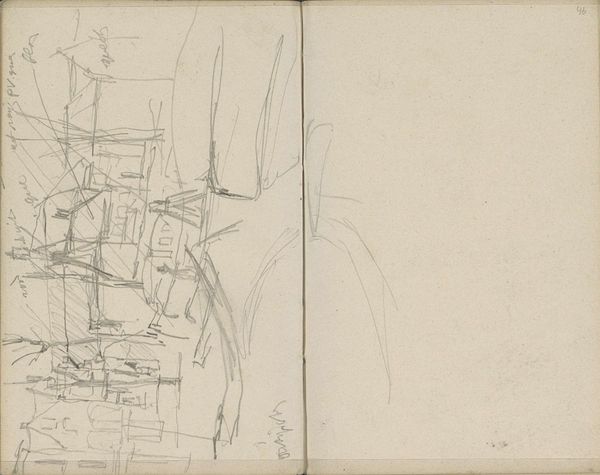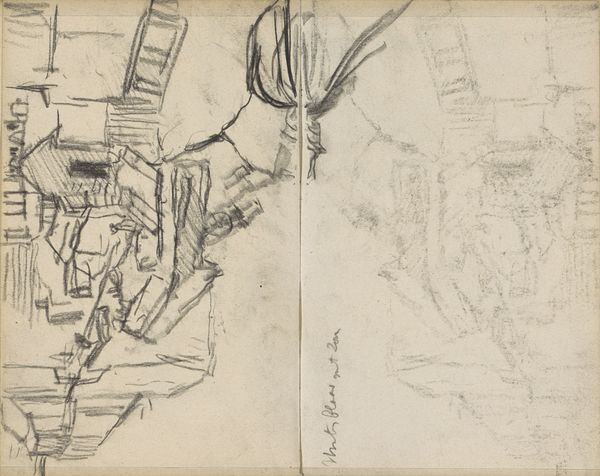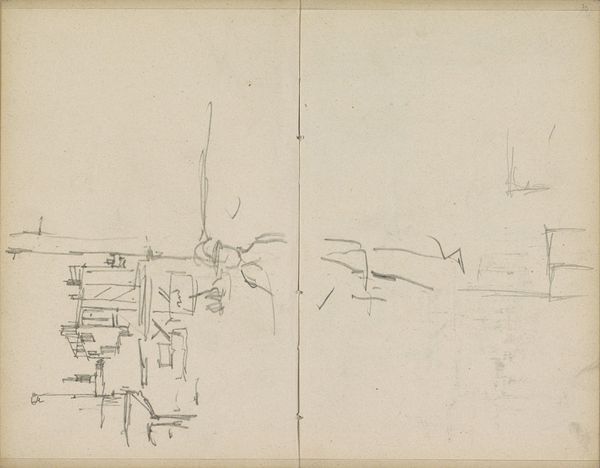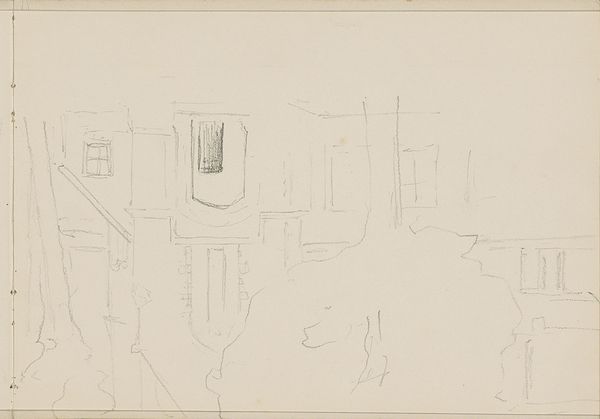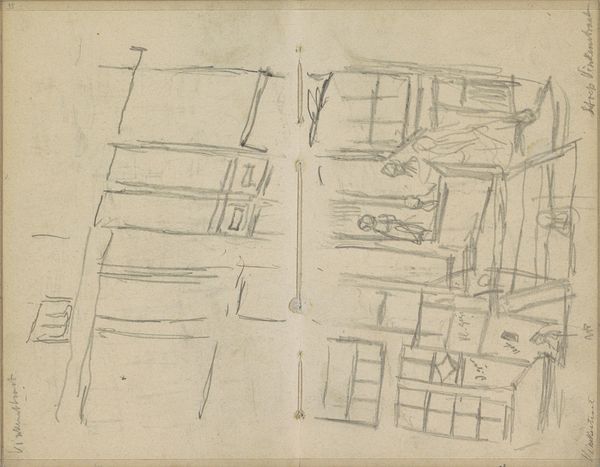
Copyright: Rijks Museum: Open Domain
Editor: Here we have George Hendrik Breitner's pencil drawing, "Gezicht op de Dam te Amsterdam," created around 1902-1903. It feels almost like a fleeting snapshot of a bustling city. The composition is fragmented, almost unfinished. What do you see in this piece from a formal perspective? Curator: Its formal arrangement provides insight into the work’s essence. Breitner captures a moment, not through detail, but through suggestive lines and shapes. The dichotomy in the sketchbook--between the filled page with discernible forms on the left and the almost empty one on the right--compels consideration of presence and absence. Do you see how this incompleteness invites the viewer to participate in the work, to fill in the blanks? Editor: That’s an interesting observation. I was so focused on the “unfinishedness” being a kind of artistic choice, suggesting a scene always in motion. Curator: Indeed, this aligns with Impressionistic tenets; it's not merely an incomplete work, but a calculated composition. Consider the lines—quick, decisive, yet open. They establish spatial relations, depth, and suggest movement, almost like early stop-motion studies. It prompts you to ask, does the lack of detail amplify or diminish its impact? Editor: I see what you mean. It directs attention to the bare essentials of form, making those choices stand out even more. Perhaps, the aesthetic impact resides less in what is represented and more in how it’s rendered, the dynamism suggested by its open composition? Curator: Precisely! The formal elements serve to communicate the ephemeral experience of the modern city, prioritizing gesture over complete representation. And that division creates tension. Editor: Thank you! It's incredible how a seemingly simple sketch can reveal so much when analyzed in this way. Curator: A rigorous interrogation of form unveils intentionality. Now, you too are learning the language of lines.
Comments
No comments
Be the first to comment and join the conversation on the ultimate creative platform.
